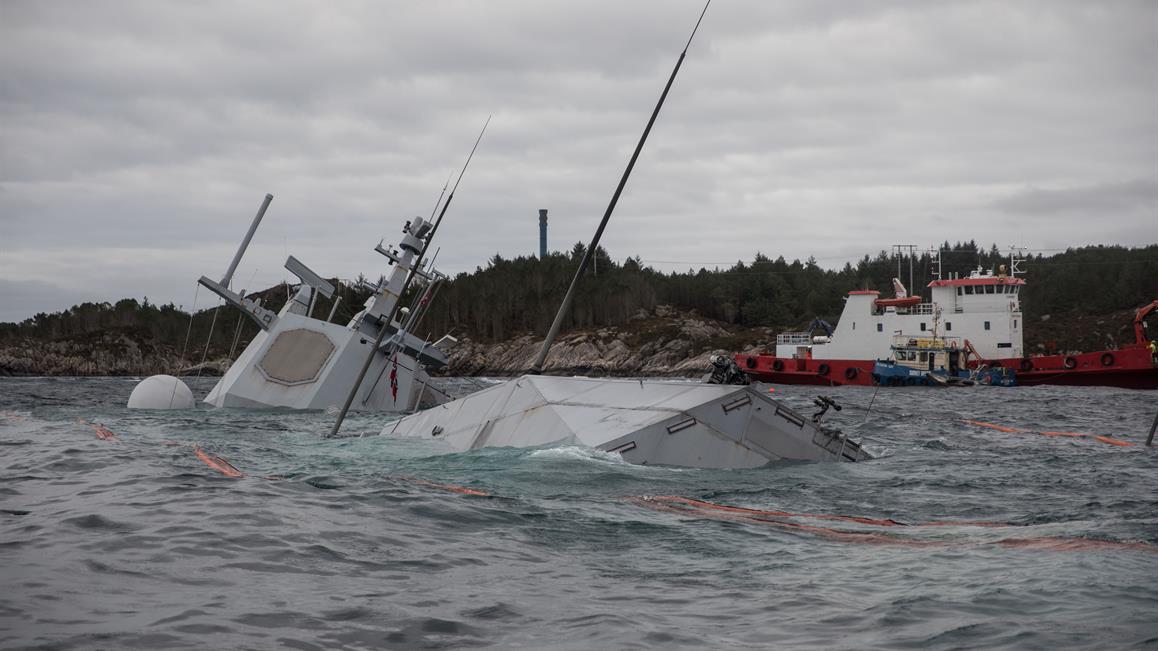When the Norwegian frigate Helge Ingstad sank after a collision with the tanker Sola TS last Thursday, it spurred a wave of more or less qualified analysis. Several people have suggested that I should write something akin to my critical review of the lessons from the US warship collisions last year. But frankly, I don’t have so much to contribute with at this point. What made the American collisions interesting was that the conclusions in the official reports were so odd. I strongly assume that the Norwegian authorities will get to the bottom in the case with Helge Ingstad.
But still, it is a shocking event, and I do believe that it is beneficial to get some professional assessment into the public debate at this point. There is a lot of available material, and we might as well have a debate about what it means.

TAS over at verdigris.blog has done a fantastic job of analyzing the incident. I highly recommend his blog post. I agree with his conclusions.
I do want to add a few comments, though. TAS is somewhat handicapped by not understanding Norwegian, so he relies on a subtitled translation of the radio traffic.
There is then a sequence of poorly-translated messages where HELGE INGSTADT appears to suggest that she has ‘a few degrees starboard when we passed’. This could mean one of two things – either she has the flexibility to alter her course only a few degrees to starboard, or else she believes that she may be passing the SOLA TS on her starboard side and that a collision is not anticipated, although it would clearly be incredibly close. Whatever the intent, the effect is the same; a very close quarters situation is inevitable.
I hear this radio traffic differently. When the first communication with Helge Ingstad is made, the radio operator sounds almost cheerful. There is no sense of alarm in his voice, and the words reflect casual jargon. This is quickly replaced by confusion as the pilot on Sola TS suggests that Helge Ingstad should alter course. Clearly, Helge Ingstad was not expecting such a request at this point. The radio operator begins to talk about geographical objects, which to me suggests that he is not aware of the ships ahead of him. I get the sense that he believes he is being warned about a geographical obstacle.
So my understanding is that the answer is neither of the two things that TAS proposes. I think he is trying to explain that he will turn a few degrees to starboard when he passes a certain geographical location.
Ironically, this would mean that the radio traffic distracted the bridge crew on Helge Ingstad from looking out the windows or into the radar screen, where they might discover the oncoming tanker. Instead they would direct their attention to the nautical chart to figure out which geographical danger the other person on the radio is talking about. This recording from 8 November is a textbook example of how not to convey a clear message under pressure. The first time anyone on the radio tells Helge Ingstad explicitly that the danger is another ship is when the pilot says “It will be a collision here”.
A contributing factor to this confusion could be the name of the ship. On a coarse radio connection, “Sola TS” can easily be confused with “VTS”. It is possible that Helge Ingstad thought he was talking to the VTS operator. This would make it logical to think about geographical obstacles rather than anti-collision.
All this, of course, does not change the fact that Helge Ingstad should have noticed the ships ahead. But it can perhaps help explain why they failed to avoid collision at the last moment.
Another small thing that I read differently from TAS is the timeline. I only count 1m30s from the initial radio contact with Helge Ingstad to collision. TAS seems to get about the double.

Leave a Reply